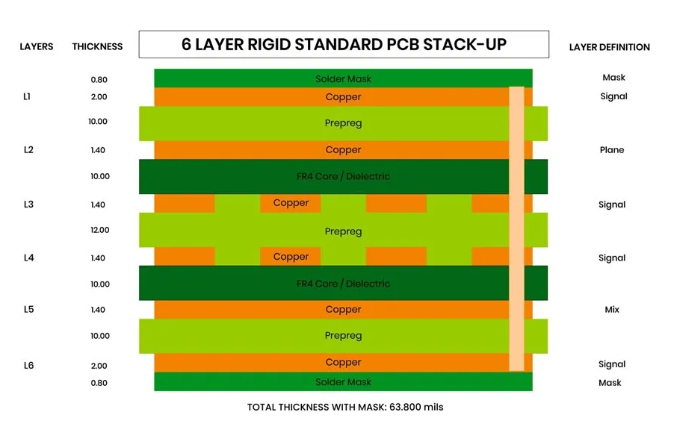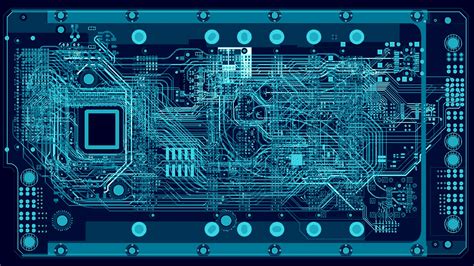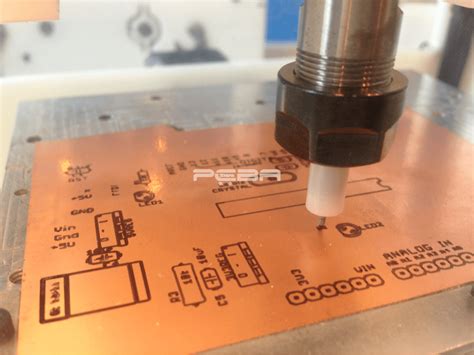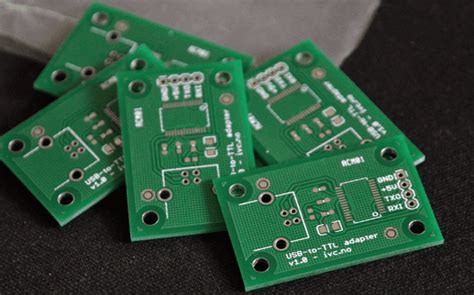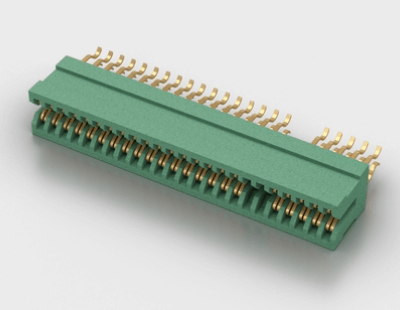Elevating Performance: The Power of 370HR Laminates and Prepregs
Key Takeaways
When it comes to pcb manufacturing, the adoption of 370HR laminates and prepregs is a game changer. These materials significantly enhance the performance of multilayer Printed Wiring Boards (PWBs), primarily due to their superior thermal reliability and mechanical strength. This ultimately leads to lower pcb manufacturing costs by increasing durability and performance, which is crucial for high-speed applications. The 370HR technology also directly addresses common issues such as conductive anodic filament problems, making it an ideal choice for pcb manufacturing companies looking to ensure long-lasting performance in their products. As a result, integrating these advanced materials into your pcb manufacturing business not only boosts reliability but also positions your products competitively in the market, setting a new standard for quality and innovation in electronic assembly.
Introduction to 370HR Laminates and Prepregs
In the ever-evolving landscape of pcb manufacturing, the introduction of 370HR laminates and prepregs marks a significant advancement. These materials are designed specifically to meet the rigorous demands of modern multilayer Printed Wiring Boards (PWBs). As you explore the benefits of 370HR technology, you will notice that its superior thermal reliability is one of its standout features. This capability ensures optimal performance in high-speed applications where temperature fluctuations could otherwise compromise functionality. Moreover, by improving mechanical strength, these laminates bolster the resilience of your PWBs, providing peace of mind against physical stress during operation.
Furthermore, 370HR materials address critical challenges such as conductive anodic filament issues that are prevalent in the industry. This consideration is especially pertinent for those sourcing from various pcb manufacturing companies looking to reduce defects and enhance product reliability—all important elements in maintaining a competitive edge in the pcb manufacturing business. Therefore, when assessing your pcb manufacturing cost, investing in high-quality laminates like 370HR could offer long-term savings by reducing failure rates and enhancing product quality.
“Utilizing innovative materials can drastically improve performance metrics and reduce overhead costs in circuit board production.”
By embracing these advancements, you not only elevate your product’s capabilities but also position yourself well within this dynamic market.
Superior Thermal Performance of 370HR Materials
The 370HR laminates and prepregs are revolutionizing the landscape of pcb manufacturing by showcasing remarkable thermal performance that is essential for high-speed applications. In the realm of pcb manufacturing companies, the need for materials that can withstand increased operational temperatures is critical. With the introduction of 370HR materials, you can expect exceptional thermal reliability, which significantly enhances the overall durability and lifespan of multilayer Printed Wiring Boards (PWBs).
These materials are engineered to maintain their properties even under extreme conditions, making them a preferred choice in environments where temperature fluctuations are common. One key advantage is their ability to dissipate heat efficiently, which directly impacts signal integrity and reduces thermal fatigue. The following table summarizes some of the critical thermal characteristics of 370HR:
| Property | Value |
|---|---|
| Glass Transition Temperature (Tg) | ≥ 170°C |
| Thermal Conductivity | 2.5 W/m·K |
| Coefficient of Thermal Expansion | 20 x 10^-6 /°C |
Utilizing these advanced materials not only improves performance but also helps in cutting down on pcb manufacturing costs due to reduced failures and a lower need for maintenance. This enhanced thermal management capability addresses common issues that arise in conventional boards, ensuring that you can focus on growing your pcb manufacturing business with greater confidence. By integrating 370HR laminates and prepregs into your production processes, you will position yourself at the forefront of innovation in the highly competitive electronics market.
Mechanical Strength and Reliability in Multilayer PWBs
When it comes to pcb manufacturing, the choice of materials can significantly impact the overall performance of your products. 370HR laminates and prepregs are engineered to enhance the mechanical strength and reliability of multilayer Printed Wiring Boards (PWBs). By incorporating 370HR materials into your designs, you can expect improved durability and resistance to the stresses often encountered during the pcb manufacturing process. These materials withstand extreme environmental conditions while maintaining their structural integrity, which is particularly important if you’re working with demanding applications or high-speed performance requirements. As you consider various options with pcb manufacturing companies, understanding the benefits that 370HR technology brings to your projects may also contribute to optimizing your pcb manufacturing cost. Ultimately, using these advanced materials not only elevates the quality of your PWBs but also strengthens your pcb manufacturing business by ensuring that you deliver reliable, high-performance products to your customers.
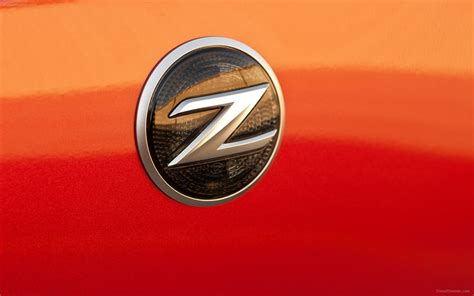
Addressing Conductive Anodic Filament Issues
In the realm of pcb manufacturing, the challenge of conductive anodic filament (CAF) issues is significant, particularly as designs evolve towards increasingly complex and miniaturized structures. You may find that traditional materials often succumb to these challenges, resulting in unpredictable failures and costly downtime. However, with the integration of 370HR laminates and prepregs, you can greatly enhance the robustness of your multilayer Printed Wiring Boards (PWBs). These advanced materials boast exceptional thermal reliability and mechanical strength, which are essential in mitigating issues related to CAF. The superior resistance offered by 370HR ensures that your boards can withstand the rigors of high-speed applications while maintaining integrity under varying thermal conditions. By choosing materials designed to combat these issues, you not only improve the reliability of your products but also gain a competitive edge over other pcb manufacturing companies, ultimately reducing your overall pcb manufacturing cost and enhancing your pcb manufacturing business viability. Emphasizing such advanced materials in your processes allows for a more resilient product that meets modern performance demands without succumbing to common failures associated with traditional laminates.

Advantages of 370HR in High-Speed Applications
The advantages of 370HR laminates and prepregs in high-speed applications are substantial, particularly for those involved in pcb manufacturing processes. With the increasing demand for enhanced performance in multilayer Printed Wiring Boards (PWBs), you can rely on the superior thermal stability offered by 370HR materials. These materials excel in managing heat dissipation, which significantly contributes to the longevity of your products. Moreover, the mechanical strength provided by 370HR laminates can greatly reduce the risks of failure during operation, making them a smart choice for pcb manufacturing companies that require robustness and reliability. This is especially true when considering the pcb manufacturing cost, where maximizing durability while minimizing potential defects becomes essential. Additionally, 370HR’s capability to address conductive anodic filament issues enhances its suitability for high-speed applications, enabling your pcb manufacturing business to achieve higher performance standards without compromising on quality. By incorporating these advanced materials into your designs, you not only optimize functionality but also set a foundation for future innovations within your projects.

Manufacturing Process of 370HR Laminates and Prepregs
The manufacturing process of 370HR laminates and prepregs involves several critical steps that ensure participants within the pcb manufacturing landscape can meet the stringent demands of modern electronics. To begin, raw materials are selected for their specific properties, beginning with high-performance resins and robust reinforcement fibers that provide enhanced thermal stability and mechanical strength, crucial for multilayer Printed Wiring Boards (PWBs). Once the materials are sourced, they undergo precise formulation and mixing to achieve the desired viscosity and performance criteria.
The next phase includes the lamination process where layers are stacked in a controlled environment, ensuring alignment and adhesion between layers for optimal performance. This step is crucial in addressing concerns such as conductive anodic filament issues, which can plague conventional materials under certain conditions; integrating 370HR laminates significantly mitigates these risks.
In parallel, any pcb manufacturing companies engaged in this process must maintain stringent quality control protocols to ensure consistency. After lamination, the resulting panels are cured at regulated temperatures to solidify the structure fully. The final stages involve profiling and cutting these laminates into specified dimensions tailored to client needs—coinciding with various pricing models that shape your overall pcb manufacturing cost.
For those considering starting a pcb manufacturing business, understanding this intricate process is essential as it not only impacts cost efficiency but also determines the reliability of the final product in high-speed applications where thermal reliability is paramount. As you delve further into 370HR technology, achieving optimal performance starts with a meticulous commitment to quality at every step of your manufacturing operations.
Case Studies: Success Stories with 370HR Products
The utilization of 370HR laminates and prepregs in pcb manufacturing has led to remarkable advancements that underscore their efficacy in real-world applications. Numerous pcb manufacturing companies have reported significant improvements in the performance of multilayer Printed Wiring Boards (PWBs) upon integrating these superior materials. For instance, one prominent case involved a leading pcb manufacturing business that sought to enhance the thermal reliability and mechanical strength of its products. By switching to 370HR, the company mitigated issues related to conductive anodic filaments, which are critical challenges in high-speed applications where increased thermal demands are placed on circuit boards. Additionally, clients noted a drastic reduction in pcb manufacturing costs due to fewer failures and longer product lifecycles, allowing for more efficient operational workflows. The success stories extending from these implementations illustrate how embracing innovative materials like 370HR not only enhances product reliability but also aligns with modern demands for efficiency and performance in the electronic industry. This transition not only marks a pivotal shift in manufacturing processes but also exemplifies how strategic material choices can have lasting impacts on business sustainability and growth within this competitive sector.

Future Innovations and Developments in 370HR Technology
As you explore the future innovations and developments in 370HR technology, it’s clear that the landscape of pcb manufacturing is set to evolve significantly. The advancements in 370HR laminates and prepregs will likely enhance their integration into various applications, especially in the flourishing sectors of high-speed electronics and multilayer Printed Wiring Boards (PWBs). You might find that emerging techniques within pcb manufacturing companies are focusing on leveraging the unique properties of these materials, such as superior thermal reliability and mechanical strength. These innovations not only promise to optimize performance but also aim to minimize challenges associated with conductive anodic filament issues, a common concern in high-speed circuits. As the demand grows for more efficient and cost-effective solutions, understanding these trends could provide you with insight into potential ventures within the pcb manufacturing business. Therefore, staying abreast of these changes can be crucial for those looking to navigate expenses related to pcb manufacturing costs, ensuring that you not only remain competitive but also capitalize on the superior benefits offered by 370HR laminates and prepregs.
Conclusion
In conclusion, the integration of 370HR laminates and prepregs significantly enhances the overall performance of multilayer Printed Wiring Boards (PWBs). As you navigate the complexities of pcb manufacturing, it’s essential to recognize how these advanced materials contribute to superior thermal reliability and impressive mechanical strength. By addressing critical issues such as conductive anodic filament problems, 370HR laminates provide a robust solution that is especially beneficial in high-speed applications. This not only optimizes the end product but also impacts your bottom line by potentially lowering the pcb manufacturing cost through improved longevity and reliability. Furthermore, partnering with reputable pcb manufacturing companies that utilize these innovative materials can elevate your pcb manufacturing business to new heights, ensuring you stay competitive in a rapidly evolving marketplace. As you explore future innovations within this technology, it becomes clear that adopting 370HR laminates and prepregs is not just a choice; it’s a strategic move towards achieving excellence in your electronic designs.
FAQs
What are 370HR laminates and prepregs?
370HR laminates and prepregs are advanced materials designed for pcb manufacturing, offering enhanced thermal reliability, mechanical strength, and improved performance in multilayer Printed Wiring Boards.
How do 370HR laminates improve the pcb manufacturing process?
By utilizing 370HR laminates, you can achieve superior thermal performance, which is crucial in high-speed applications. This leads to a significant reduction in the overall pcb manufacturing cost, making them an excellent choice for pcb manufacturing companies focused on quality and efficiency.
Why are 370HR materials essential for high-speed applications?
The mechanical strength of 370HR materials ensures reliability, while their resistance to conductive anodic filament issues prevents failures. This is particularly important in the evolving landscape of the pcb manufacturing business, where speed and reliability are crucial.
Are there cost advantages to using 370HR laminates?
While the initial investment in 370HR laminates may be higher due to their advanced features, they can reduce overall costs related to failures and rework over time, thus providing a worthwhile return on investment for pcb manufacturing companies.
What future developments can we expect with 370HR technology?
Innovations in material formulations and manufacturing techniques promise even greater performance enhancements for pcb manufacturing, which could lead to more cost-effective solutions tailored for high-speed applications.


